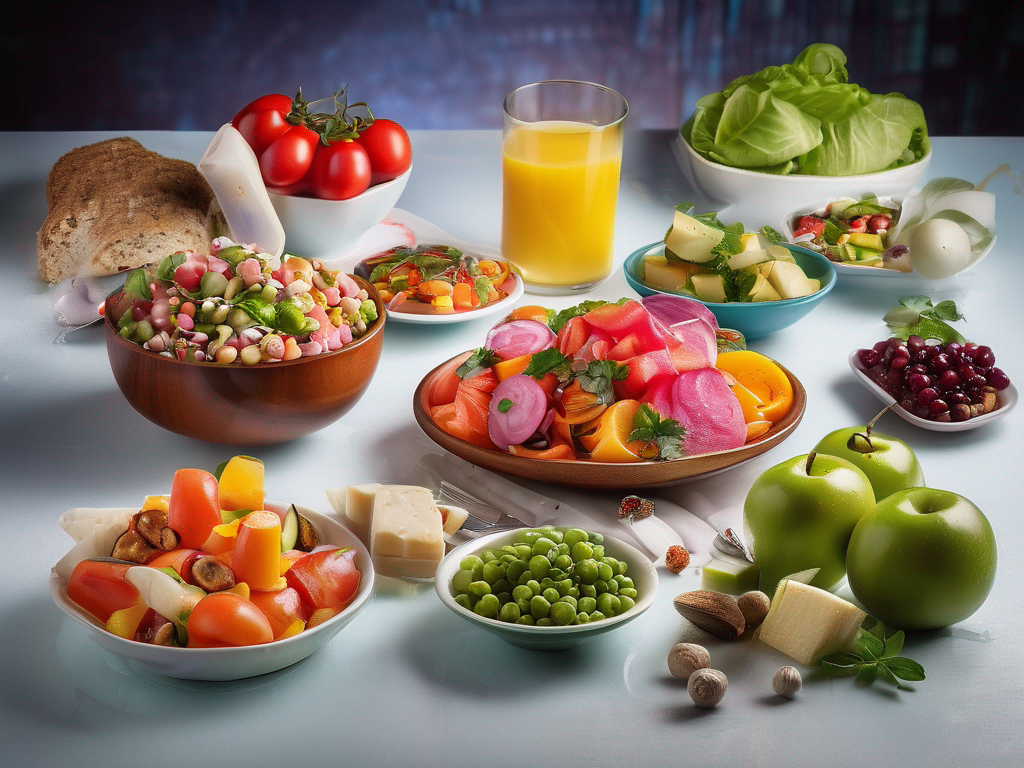
The Ultimate Guide to Frozen Foods Storage
Get Your Free Food Safety Cheat Sheet
30 most common foods with instant answers. Print it and stick it on your fridge—completely free!
The Ultimate Guide to Frozen Foods Storage
In today's busy world, frozen foods have become a convenient option for many households. Whether you're stocking up on frozen veggies, meats, or ready-to-eat meals, proper storage is key to maintaining their quality and safety. In this comprehensive guide, we'll explore everything you need to know about storing frozen foods effectively.
Benefits of Frozen Foods
Before diving into storage tips, let's first understand why frozen foods are a popular choice for many consumers:
- Convenience: Frozen foods offer quick and easy meal solutions for busy individuals and families.
- Nutrient Retention: Freezing helps preserve the nutrients in foods, making them a healthy choice.
- Extended Shelf Life: Frozen foods have a longer shelf life compared to fresh produce, reducing food waste.
- Cost-Effective: Buying frozen foods in bulk can be a cost-effective way to meal prep and save money.
Proper Storage Guidelines
When it comes to storing frozen foods, following proper guidelines is essential to ensure food safety and maintain quality. Here are some key tips to keep in mind:
Freezer Temperature
- Set your freezer temperature to 0°F (-18°C) or lower to keep foods frozen safely.
- Use a freezer thermometer to monitor the temperature regularly and make adjustments if needed.
Packaging
- Store frozen foods in airtight, moisture-proof packaging to prevent freezer burn.
- Use freezer-safe containers or bags to maintain freshness and prevent odors from spreading.
Organization
- Label and date all frozen foods to keep track of storage times and prevent food spoilage.
- Arrange foods in the freezer with proper airflow to ensure even freezing and efficient storage.
Thawing Practices
- Thaw frozen foods safely in the refrigerator, microwave, or cold water to prevent bacterial growth.
- Avoid thawing foods at room temperature to reduce the risk of foodborne illness.
Foods That Freeze Well
Not all foods are suitable for freezing, but many can be frozen successfully while maintaining their quality. Here are some examples of foods that freeze well:
- Fruits: Berries, bananas, and mango slices.
- Vegetables: Green beans, peas, and broccoli florets.
- Meats: Chicken breasts, ground beef, and fish fillets.
- Dairy: Cheese, butter, and yogurt.
Foods to Avoid Freezing
While many foods can be frozen, some items may not freeze well or can experience changes in texture and flavor. Here are foods to avoid freezing:
- Cream-based sauces: These may separate and become grainy when frozen.
- Fried foods: Fried foods can lose their crispiness and become soggy after freezing.
- Raw vegetables with high water content: Vegetables like lettuce and cucumbers may become limp when frozen.
Conclusion
Proper storage of frozen foods is crucial for maintaining their quality and ensuring food safety. By following the guidelines outlined in this guide, you can make the most of your frozen food purchases and enjoy convenient, nutritious meals at home. Remember to check the freezer temperature regularly, use suitable packaging, and practice safe thawing methods to extend the shelf life of your frozen foods. Stay informed and stay safe!
Authoritative Food Safety References
These agencies and university labs inform every tip and health precaution we publish.
USDA FoodKeeper – Cold Storage Guidelines
Official refrigerator, freezer, and pantry timelines maintained by the U.S. Department of Agriculture.
Visit USDA FoodKeeperFDA Produce Safety Rule & Grower Guidance
Field-to-fridge handling practices that prevent contamination of fruits, vegetables, and leafy greens.
Visit FDA Produce SafetyCDC Foodborne Illness Prevention Hub
Surveillance-backed guidance on pathogens, symptoms, and steps to reduce foodborne illness risk.
Visit CDC Food SafetyUC Davis Postharvest Technology Center
University research detailing optimal storage atmospheres for produce after harvest.
Visit UC Davis PostharvestPenn State Extension – Home Food Preservation & Safety
Peer-reviewed extension bulletins on safe canning, chilling, and reheating practices.
Visit Penn State ExtensionGet Your Free Food Safety Cheat Sheet
30 most common foods with instant answers. Print it and stick it on your fridge—completely free! Want more? Upgrade to the complete guide with 70+ foods.
Scan your food directly and get instant safety info using our AI-powered camera feature.